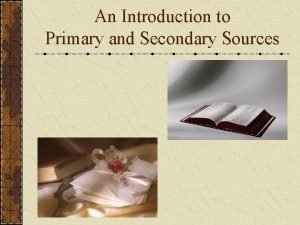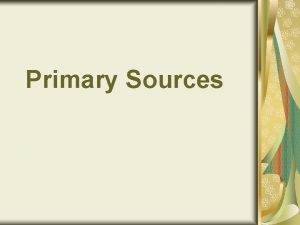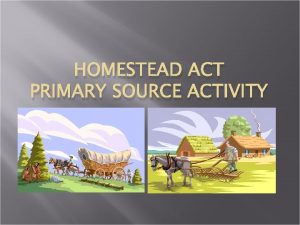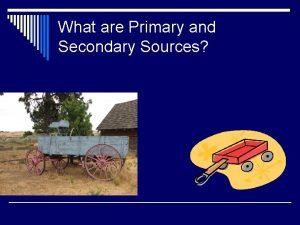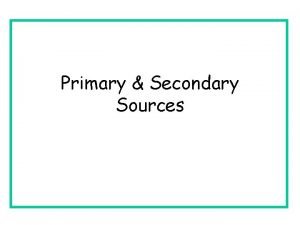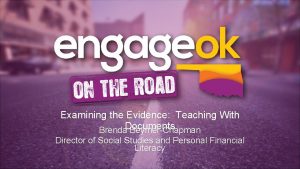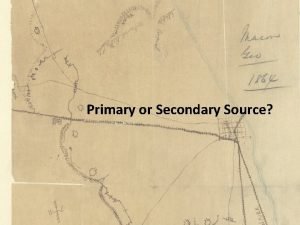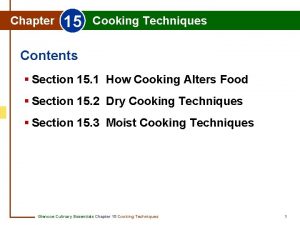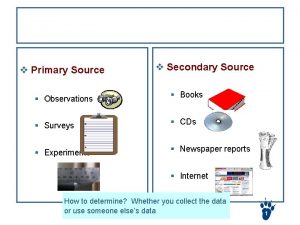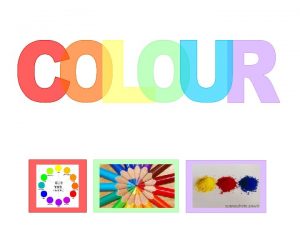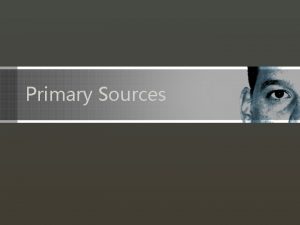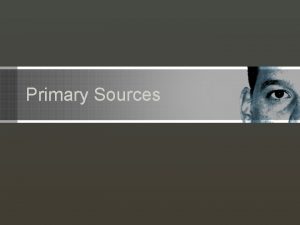What is a Primary Source A primary source



















- Slides: 19

What is a Primary Source? A primary source is something that is created or produced during the time of study. They are important, because they can give us an “insider’s” understanding of that time. Examples of primary sources are: v. Something written during that time v. Photos taken during that time v. Art, drama, or music created during that time v. Buildings, clothing, jewelry or tools created during that time

We Can Learn More About the Chumash People by Studying Primary Sources

Rafael Solares, a Santa Inez Chumash man, 1878. Bancroft Library, UC Berkeley

Rafael Solares Santa Barbara Natural History Museum

Juan Olivos May, 1932 Tejon Bancroft Library, UC Berkeley

Sister of Juan Olivos May, 1932 Tejon Bancroft Library, UC Berkeley

Juan Olivos and daughter, Angelina May, 1932 Tejon Bancroft Library, UC Berkeley

Santa Ynez Valley, 1934 Bancroft Library, Berkeley

Santa Ynez, June, 1934 Frank Estrada and sister Bancroft Library, UC, Berkeley

These are models of past Chumash people by a present-day artist for the Santa Barbara Natural History Museum. Displays like this are secondary sources. They help us to think about how things were, but were not created by a person who was really there.

The Chumash used what grew around them for foods, tools, housing, and medicine.

Chumash People were expert basket makers.

Santa Barbara Natural History Museum

Some of their baskets could even carry liquid! Expert basket makers have shown modern people how these types of baskets were made. Santa Barbara Museum of Natural History

A model of a Chumash Tomol. http: //www. nps. gov/chis/cabrillo. htm Click here for a secondary source about Chumash Tomol Building.

Contemporary Flute music by Chumash, Lew Silva

Click here to hear clips of Chumash language! (Go to page 3) Maria Solares was a Chumash woman who helped to teach others what the Chumash language really sounded like. Click here to see her picture, and how a sentence in Chumash sounds. DON’T FORGET: the Chumash did not have a written language. The written parts that you see in these links use OUR written language to help us know how to pronounce words. The Chumash people did not write their words down.

California History/Social Science & Language Arts Content Standards http: //www. cde. ca. gov/be/st/ss/ National Technology Standards http: //cnets. iste. org/students/s_stands. html

Directions 1. Insert blank slides after the Tomol Slide, and after the Language Slide. 2. Insert a text box in each slide. 3. In the first slide, write a paragraph explaining what you learned about how the Chumash people used their environment to get what they needed to live. Use the slides that you have viewed to help you with this. 4. In the second slide, reflect upon how different life would be without a written language. What would be different about your daily life if you could speak your words, but not write them down? 5. If you have extra time, look for a links to other interesting sites that will help us to understand Chumash activities and culture. Ask Mrs. Cota for help in placing these on your slides.
 Secondary sources
Secondary sources Ornaments primary or secondary source
Ornaments primary or secondary source Primary source outline
Primary source outline What is primary source
What is primary source Homestead act primary source
Homestead act primary source Primary sources in autobiography
Primary sources in autobiography Hippoing documents
Hippoing documents Is this a primary or secondary source
Is this a primary or secondary source Federal government primary source of revenue
Federal government primary source of revenue Reread the primary source on page 553
Reread the primary source on page 553 Secondary sources
Secondary sources Whats a secondary source
Whats a secondary source What are the primary and secondary source of light
What are the primary and secondary source of light Is a photograph a primary source
Is a photograph a primary source Secondary sources meaning
Secondary sources meaning What is a secondary source
What is a secondary source 15 cooking methods
15 cooking methods What are the primary source of light
What are the primary source of light Primary voltaic cell
Primary voltaic cell Secondary source
Secondary source

